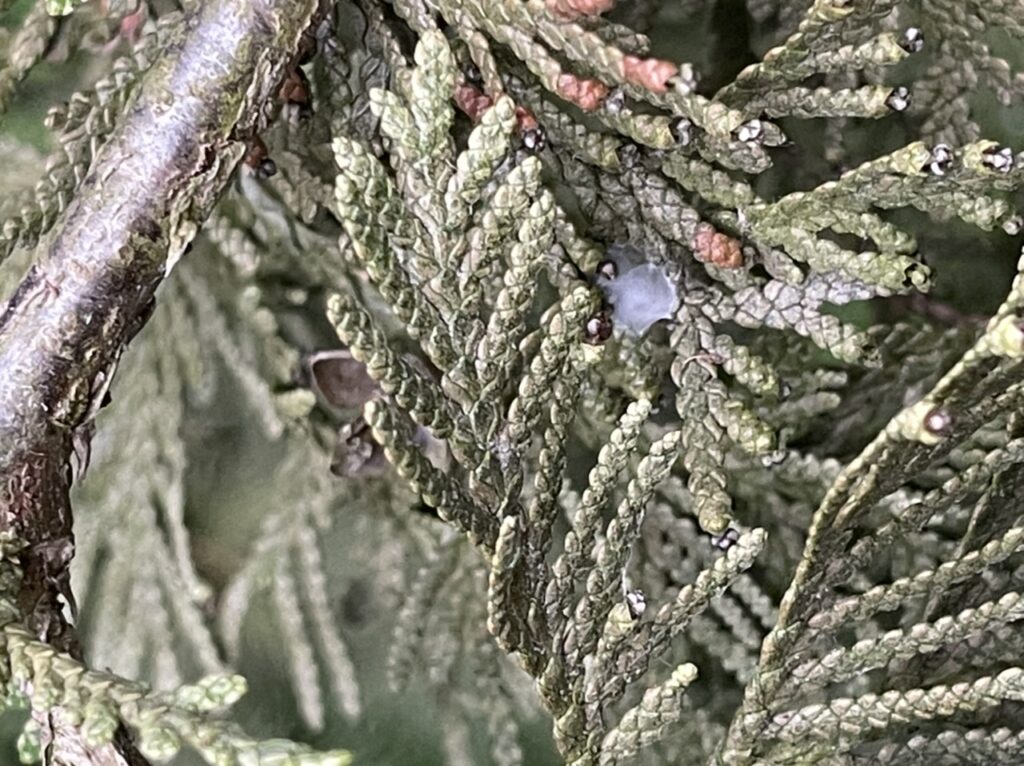
Dear Master Gardeners,
I have a wild cedar that seems to be infested with something that is making small (about 5mm) paper-like webby things on the leaves, and slightly bigger webs in cracks in the bark. One branch that has more of this and others has turned orange-ish. I’ve found this white stuff on many other cedars (including one I just bought from a nursery) but they don’t have as much. The closest match that I’ve read about is spider mites, but the photos I’ve seen show much bigger webs. The webs on leaves are all of the same size (about 5mm across) and very thin. They almost look like flecks of paper. What could it be? Thanks for your help!
Hello gardener – Thanks for contacting the Toronto Master Gardeners about the mysterious webbing on your cedar. You are right to suspect spider mites given the presence of webbing and they are a common issue on cedar and other conifers– although not always a cause for concern. I agree that your description and photo of the ‘paper-like webby things’ is not characteristic of spider mites. However, the orange foliage is a potential indication of their presence. The spider mites suck the juice from the foliage causing them to look bronzed. You may also be able to see a stippled appearance on the needles caused by their piercing mouth parts.
Spider mites are very tiny and hard to spot. An identification technique is to place a sheet of white paper under an infected area and strike the foliage sharply. The mites will fall onto the paper where they are more easily observed than on the green foliage.
The recommended treatment for a light infestation of spider mites is a spraying with a forceful stream of water including the undersides of the foliage. Do this for three days. If mites continue to be a problem, spray with an insecticidal soap every three to five days for two weeks in order to interrupt the cycle of eggs hatching. Keep in mind that spraying with insecticidal soap may also kill beneficial mites and other insects that feed on the spider mites and keep them in check. Please follow the directions on the package.
Good cultural practices to help maintain the health of your plants and make them less susceptible to pests include planting in full sun or at least partial shade, and providing plenty of moisture during the growing season. Concentrate on watering the roots with a deep watering once a week. Apply a mulch of compost or other organic material to help retain moisture as well as feeding the plant but keep the mulch several inches away from the trunk.
I also suggest that you take a sample of the webbing and foliage damage on your recently purchased cedar back to the nursery and ask for advice on identification and treatment.
For more information on spider mites, I’m including a link to a good article from the University of Maryland Extension that discusses some of the common varieties of spider mites that affect trees and shrubs
Spider Mites on Trees and Shrubs

